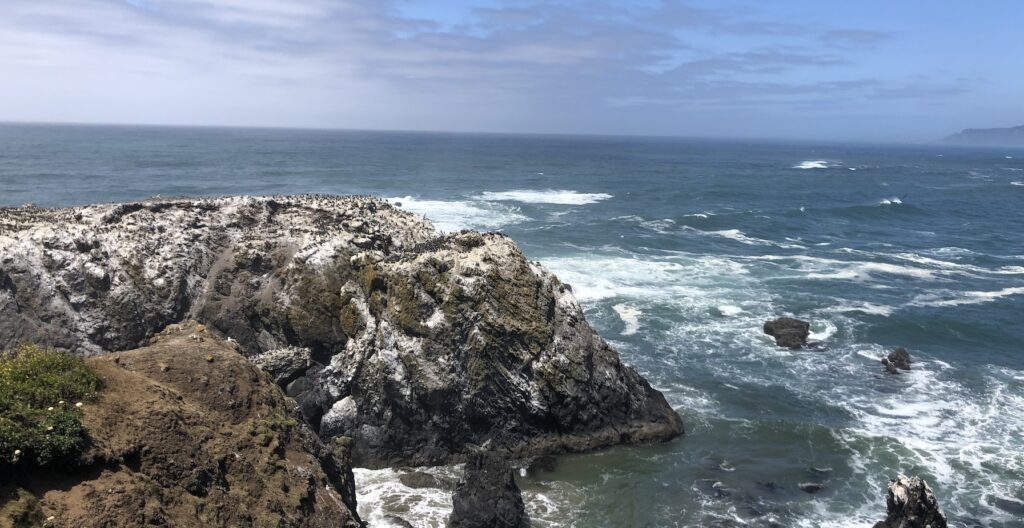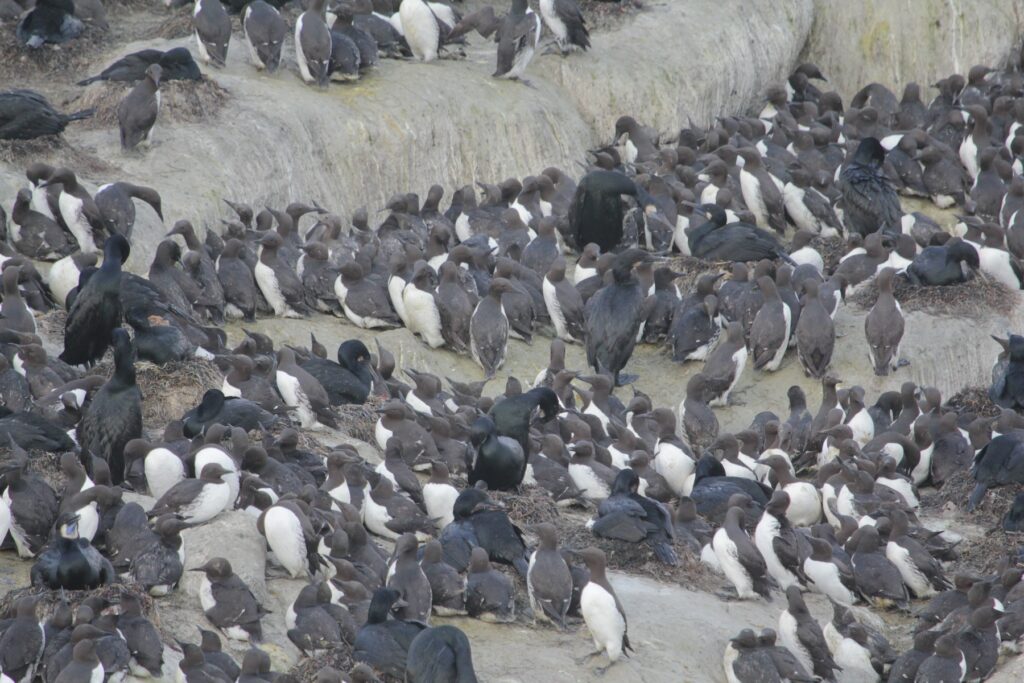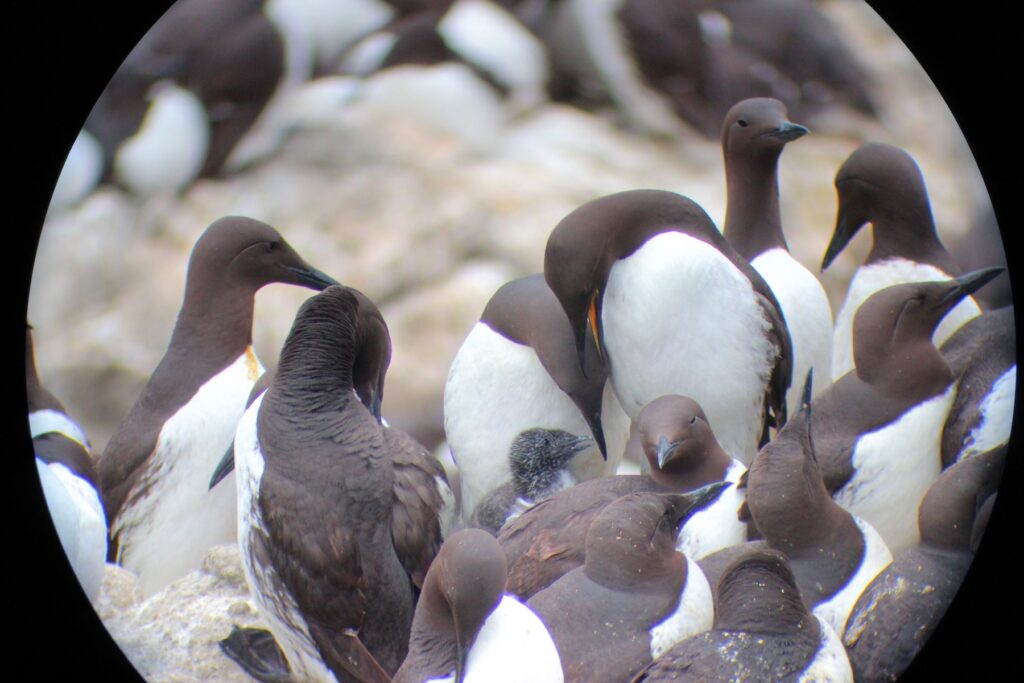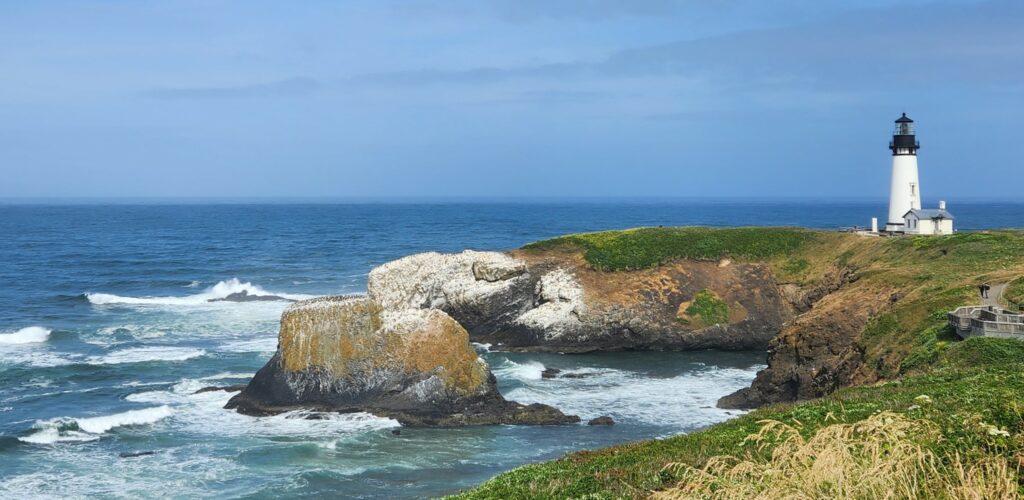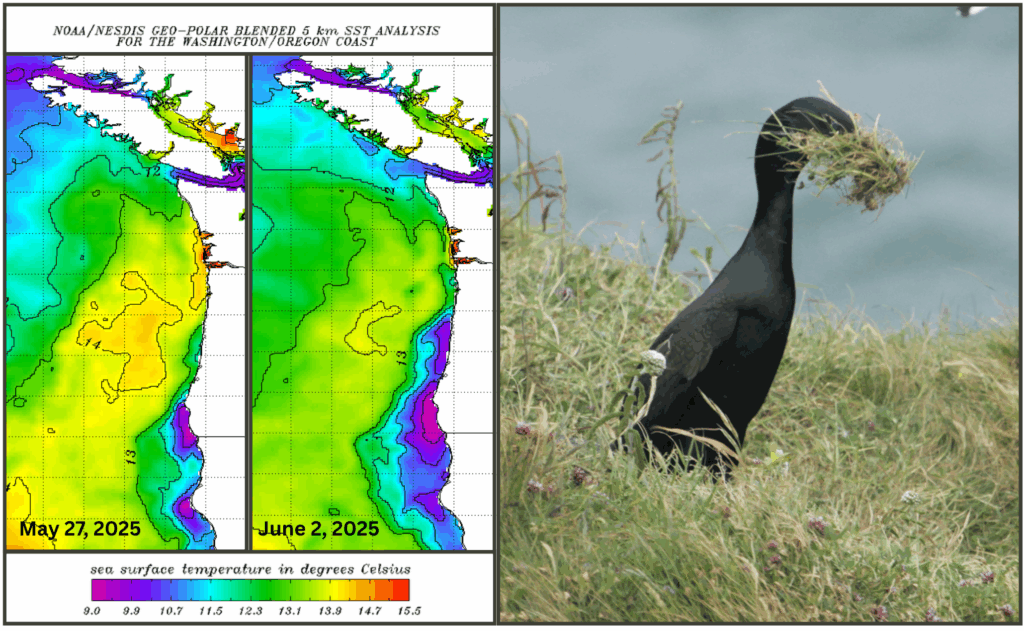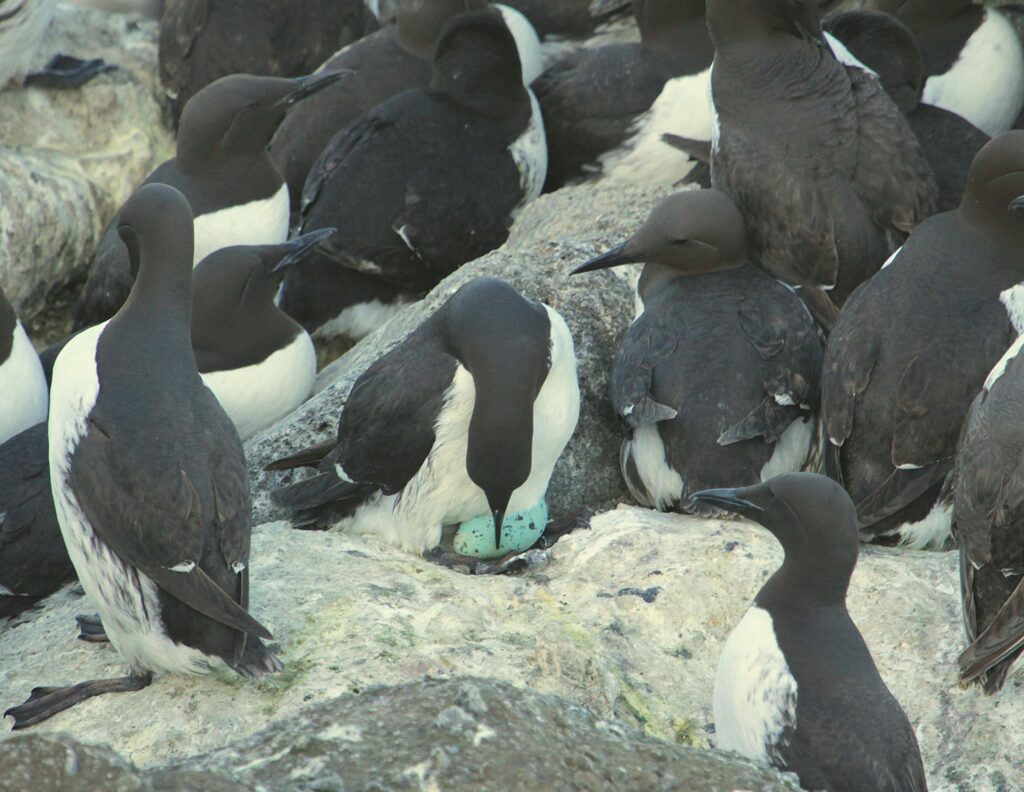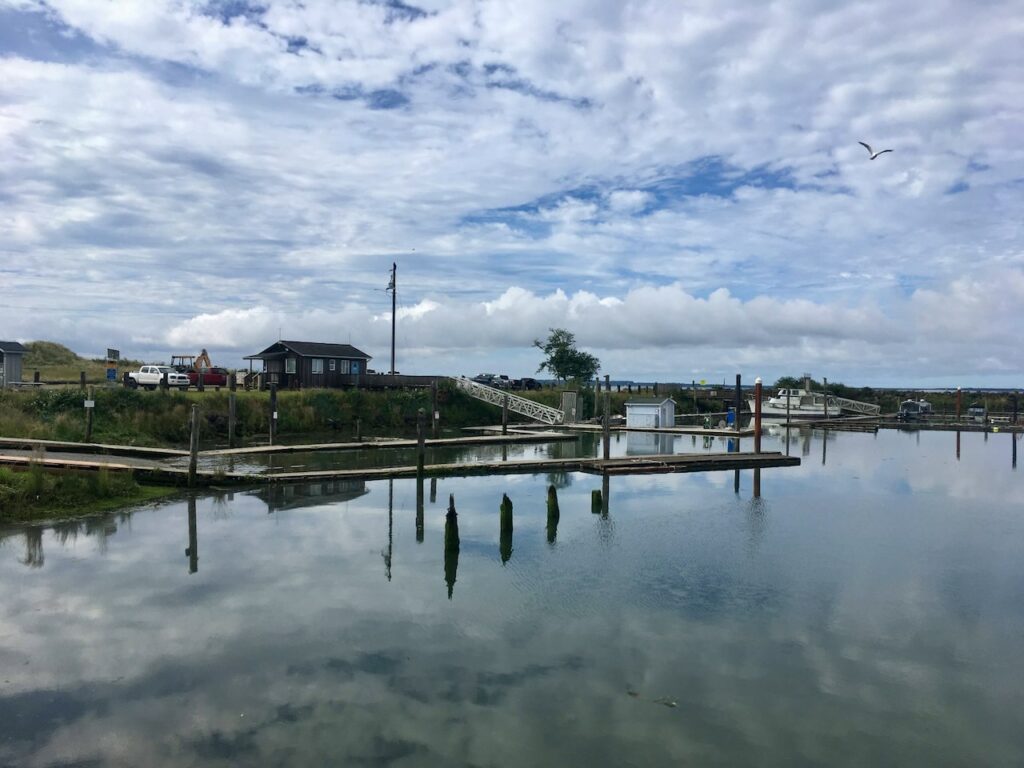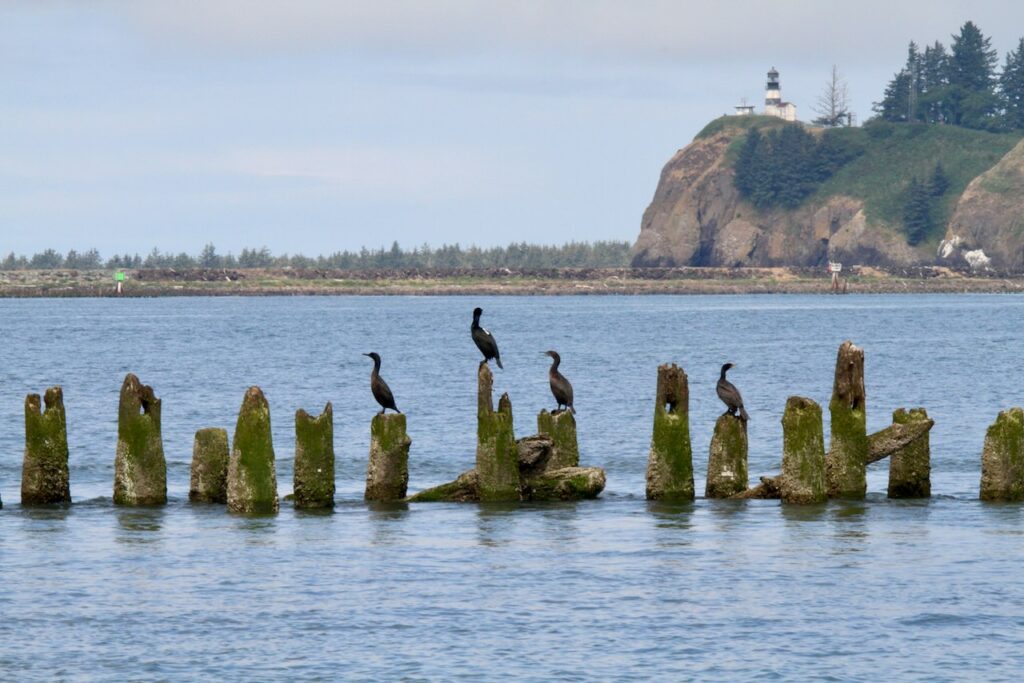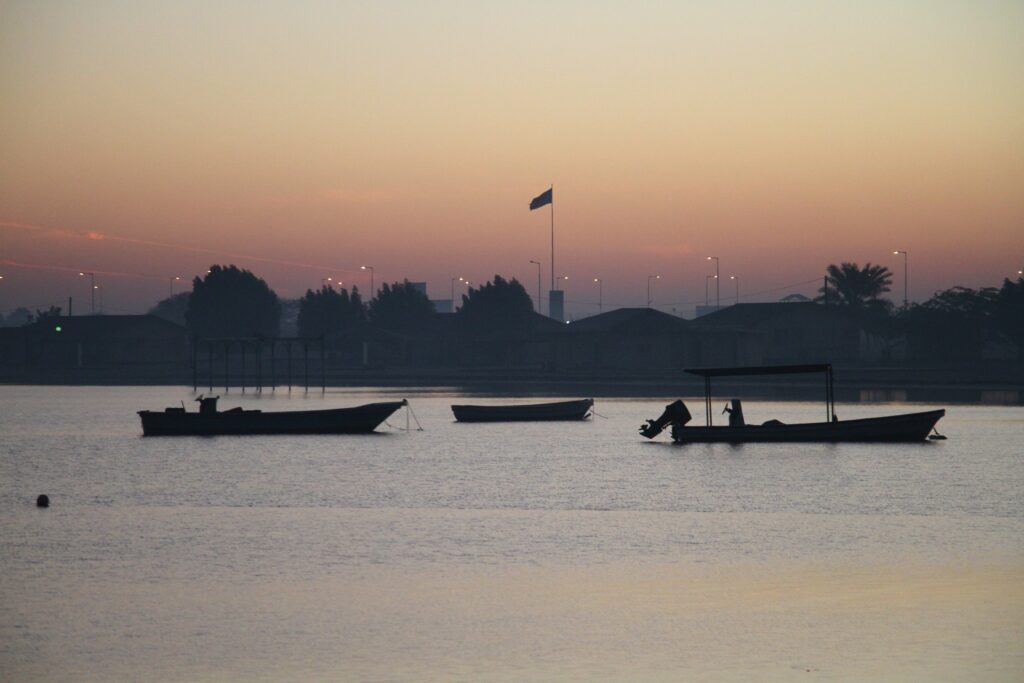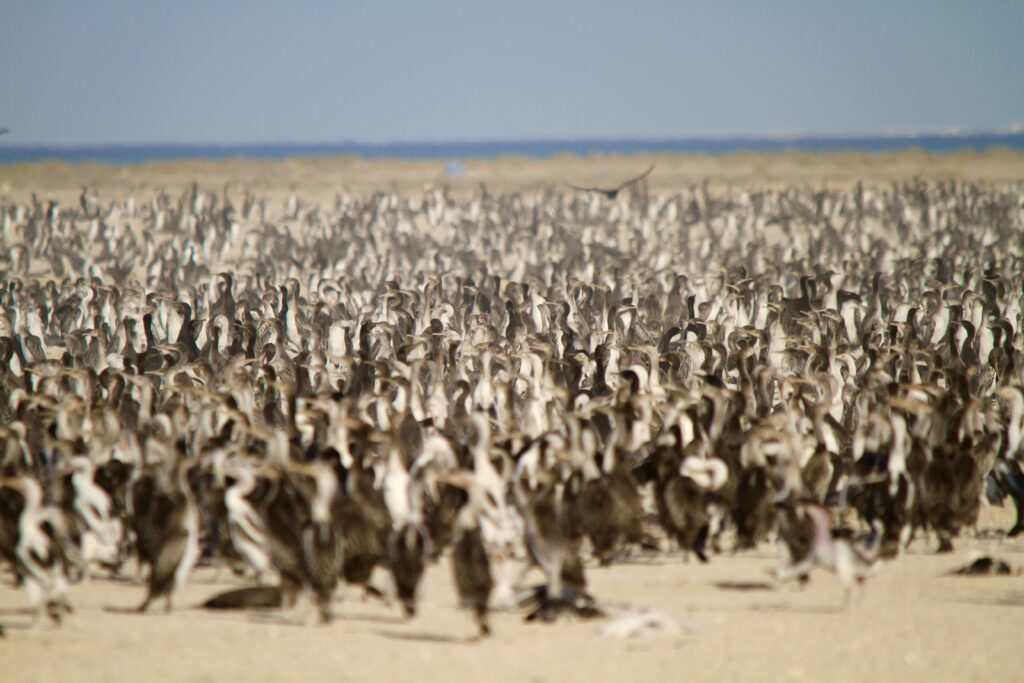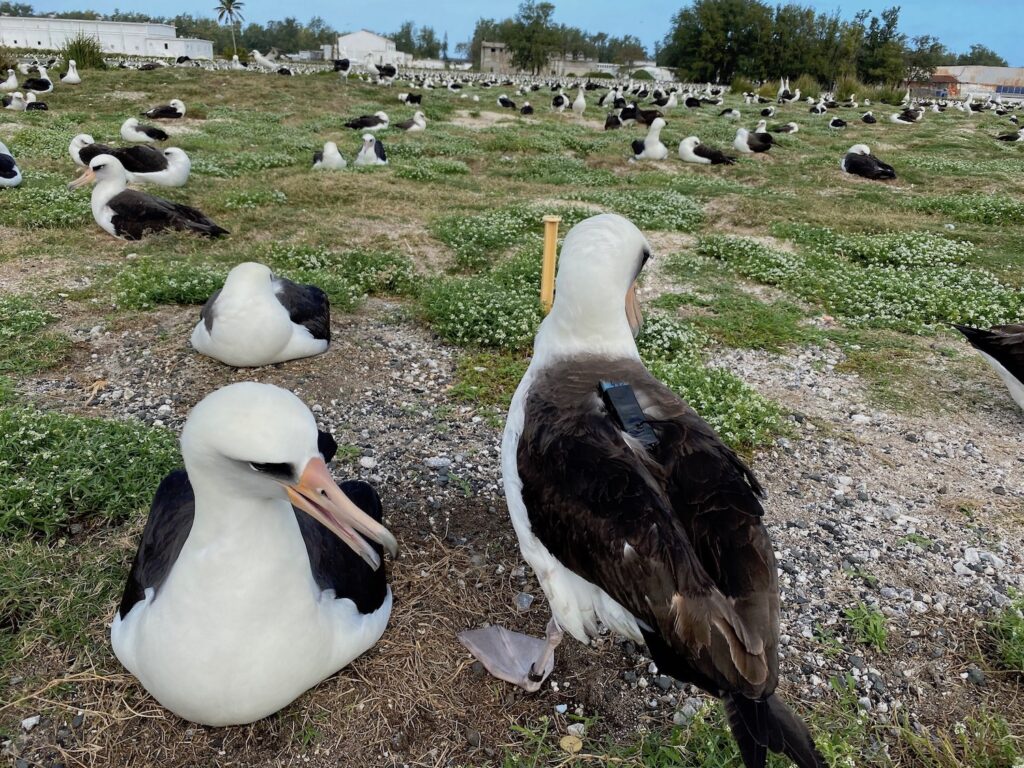By Jayden Washington Samuels, 2025 Tufted Puffin Photography Technician
The puffin is arguably one of the most iconic and recognizable seabird species on the planet. It’s one of the very few bird species that crosses over that imaginary chasm out of the birder world into the mainstream, where even those who aren’t in any way interested in birds, know what a puffin is. However, it isn’t exactly common knowledge that there are nesting populations of puffins in the Pacific Northwest. People typically associate the word puffin with only the Atlantic Puffin species, which is not found anywhere near the West coast. Here in Oregon, we have the Tufted Puffin, which happens to be the largest of the four technical puffin species (Tufted, Horned, Atlantic, and Rhinoceros Auklet).
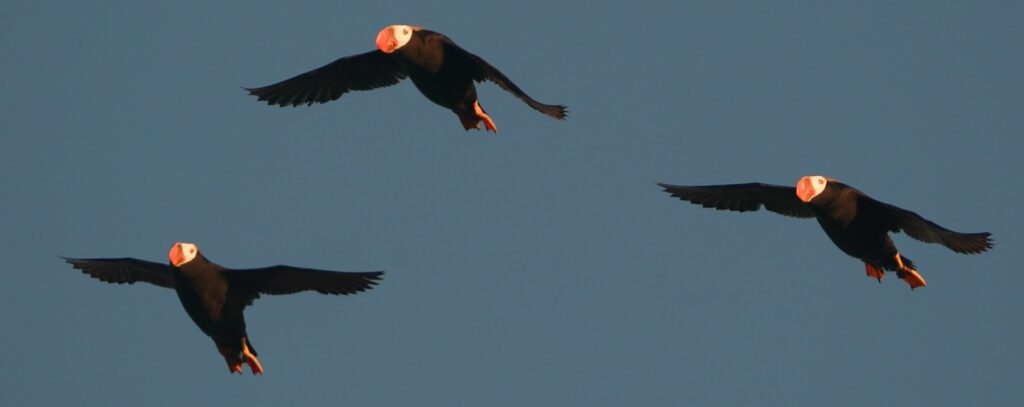
The Tufted Puffin is a pretty widespread bird, as its range stretches from the islands and open ocean off of California all the way up to the coasts of Alaska, Russia, and northern Japan. Cannon Beach—a major stronghold for the population in Oregon—is one of the most accessible locations to observe Tufted Puffins, as they utilize burrows they’ve created in the grassy top of Haystack Rock. Unfortunately, the southern population of Tufted Puffins has seen a sharp decline, and due to their typical clutch size of one egg per season, it’s incredibly hard to bolster their populations.


Many individuals—ranging from conservation biologists to local volunteers—have lended a helping hand in observing the Cannon Beach Tufted Puffin population, in order to understand the rate of decline and breeding success. The data gathered from these projects helps spread awareness for the vulnerable status of the Tufted Puffins
This is where I come in! I am a senior studying Ecology and Evolutionary Biology at the University of California, Santa Cruz (UCSC). I have been a birder and wildlife photographer for almost seven years now, and in my years at UCSC I have focused my studies and fieldwork on birds, and I have been able to be a part of incredible bird research endeavors like remote work in the Sierra Nevada mountain range focused on Sierra Nevada Gray-Crowned Rosy Finches, Peregrine Falcon breeding success and toxicology in the Greater Bay Area, and songbird banding at Younger Lagoon.


The goal of this specific project is to figure out the diet composition of Tufted Puffins in Oregon in order to have a better idea of what prey species they depend on, and if there’s any sort of linkage between their diet to their diminishing population status.
The “How” of this project lies within a combination of having the proper gear to capture these amazing birds in flight—with fish in their bills (called a “bill load”), and in my eyes, a bit of luck to be present for said moment. The Sony A9 with the matching 200-600mm lens + the 1.4x Teleconverter gave me an excellent combination of industry leading autofocus and frames per second with the reach needed to see the puffins up close. My experience preceding this project with a similar camera setup allowed me to settle in pretty quickly; so the only variables that controlled my success was the amount of puffins returning fish to their young and tide/weather variation.



This project has been ongoing for three years prior to me, and in two of those three years the average number of bill loads per season was just over 100. Last year had the most bill loads being almost three times these typical numbers. This season, I ended up not getting anywhere near as many bill loads as prior years. According to Tim Halloran, a long time volunteer who has done Tufted Puffin burrow counts for over a decade, many burrows appeared to be left unused or unsuccessful this season, meaning less chicks and in turn, less bill load photo opportunities for me.
In previous seasons the mornings seemed more productive for bill load photos. This year the evenings were significantly more productive, especially an hour or two right before sunset. My highest number of bill loads in a day ended up being 10 bill loads on a mid-July evening, and my lowest were a couple 1-3 day stretches with zero bill loads sighted. If I had to give at least one reason why there would be a lower occurrence of bill loads, I think that the Bald Eagles might have at least some effect. While I never observed one catching a Tufted Puffin, they did repeatedly go for, and catch the Common Murres which also call the rock home. I would say 80-90% of my mornings and evenings out on the beach I at least observed two Bald Eagles, and I documented 12 separate “disturbances” to the colony linked to them attempting to prey on birds sitting on the rock.

A key part of this project that I enjoyed was the public interaction. I was able to engage with many visitors and locals alike, and I loved educating the public on the Tufted Puffins. My conversations ranged from giving out tips for telling the difference between puffins and murres in flight, to giving people their first look at some on the rock by lending them my binoculars. Even though this project focuses on Tufted Puffins, I was able to get a pretty decent number of Common Murre bill loads, as they also return full prey to their colonies! Something interesting about the murres is that they only carry one fish in each bill load, which is in stark contrast to the puffins who can have countless fish in their bills at once.

I am incredibly grateful to have been selected to be a part of this project, blending two of my greatest passions—birds and photography—into a research endeavor. I never thought I would personally be able to use my skills in Wildlife Photography in a dedicated research setting!
I would like to sincerely thank Dr. Rachael Orben and Will Kennerley for this incredible opportunity.
Acknowledgments: In 2025, the Tufted Puffin Internship was supported by the Oregon Conservation and Recreation Fund. The Friends of Haystack Rock supported this project by providing intern housing in Seaside and Cannon Beach.

